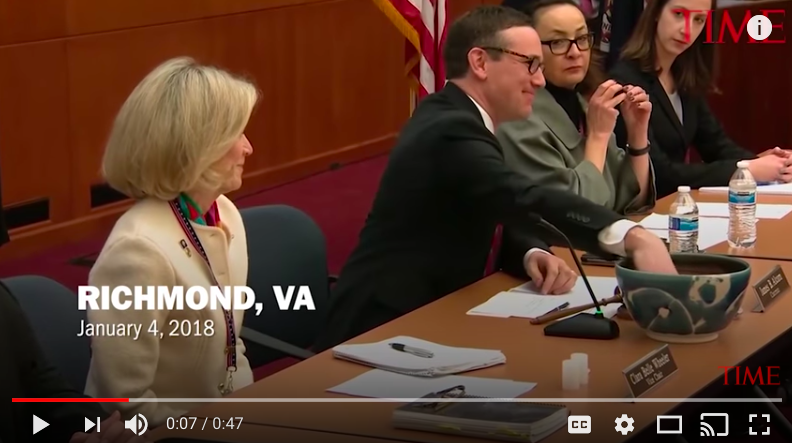Baltimore County election officials say they will likely be done with their recount of the Democratic primary race for county executive between Sen. Jim Brochin and former delegate John Olszewski Jr. as early as Saturday, July 14. But even then, if the votes remain close, the race might not be over.
That’s because this contest, in which nearly 90,000 ballots were cast, had 93 “over votes,” according to The Baltimore Sun’s Pamela Wood.
An over vote is a vote that can’t be counted by the scanner because the voter mistakenly voted for more than one candidate in a race — voting for both Brochin and Olszewski, for example — or when something else goes wrong with the ballot. It could be that the voter put a checkmark in the oval instead of filling it in, it could be a crease in the paper that caused the scanner to misread the ballot even though the oval was filled in correctly, or other similar complications. When that happens, those ballots must be manually inspected — with representatives from both campaigns able to weigh in as election officials try to determine the voter’s intent.
Already there have been several disputed ballots in which the Brochin and Olszewski campaigns disagreed on how a vote should be interpreted or whether it met the proper qualifications. Wood reported that at the end of the day Friday, Olszewski’s lead grew to 12.
The number of disputed over votes and the margin of victory will be important factors for the losing candidate when deciding if he should ask the circuit court to change the results, said John T. Willis, former Maryland secretary of state and currently a professor at the University of Baltimore.
“This isn’t over until all parties involved have exhausted their legal remedies,” Willis said.
Here’s a hypothetical example: The Brochin camp feels that 15 of the over votes were improperly counted for Olszewski and that they should have either been thrown out or counted for Brochin. At the same time, Brochin has lost the election by just five votes. If Brochin’s team felt they had a strong case when it came to those 15 over votes (or even just six of them), it might make sense to pursue the case in court.
Vicki Almond, who came in a close third, is not expected to change her ranking after the recount. Whoever becomes the Democratic nominee will face Republican Al Redmer in the fall.
In the past three decades there has only been one other recount in Baltimore County. That was in 2014 in the Republican primary for county executive when George Harman beat Tony Campbell by just 18 votes. A recount gave Harman two more votes — for a total of 20 — and he became the Republican nominee, according The Baltimore Sun. Harman was then defeated by Democrat Kevin Kamenetz.
Earlier this month in a Howard County Council primary race, Liz Walsh defeated Jon Weinstein by just two votes. A recount then gave her four more votes, according to Maryland Matters.
And in Virginia this past fall, a race for a seat in the state legislature made national news for its recount and legal challenge. Republican David Yancey beat Democrat Shelly Simonds by 10 votes, but then a recount gave Simonds a one-vote lead. However, a court ruled that one of the Simonds ballots should have been discarded — meaning the vote was tied.
Following Virginia’s election procedure, the two candidates’ names were put in a bowl and the one that was chosen (Yancey) took the seat.
If the margin of victory after the Brochin-Olszewski recount is razor thin and a court challenge is likely, Willis said, the winner might not want to be too declarative in his victory speech.
“He could say ‘It appears that I have captured the most votes’ and then go on to say how grateful he is and do his thank yous,” Willis said. “But until the other side’s given up and there’s no petition filed, I wouldn’t exalt too much.”
-Kris Henry,
The Towson Flyer



